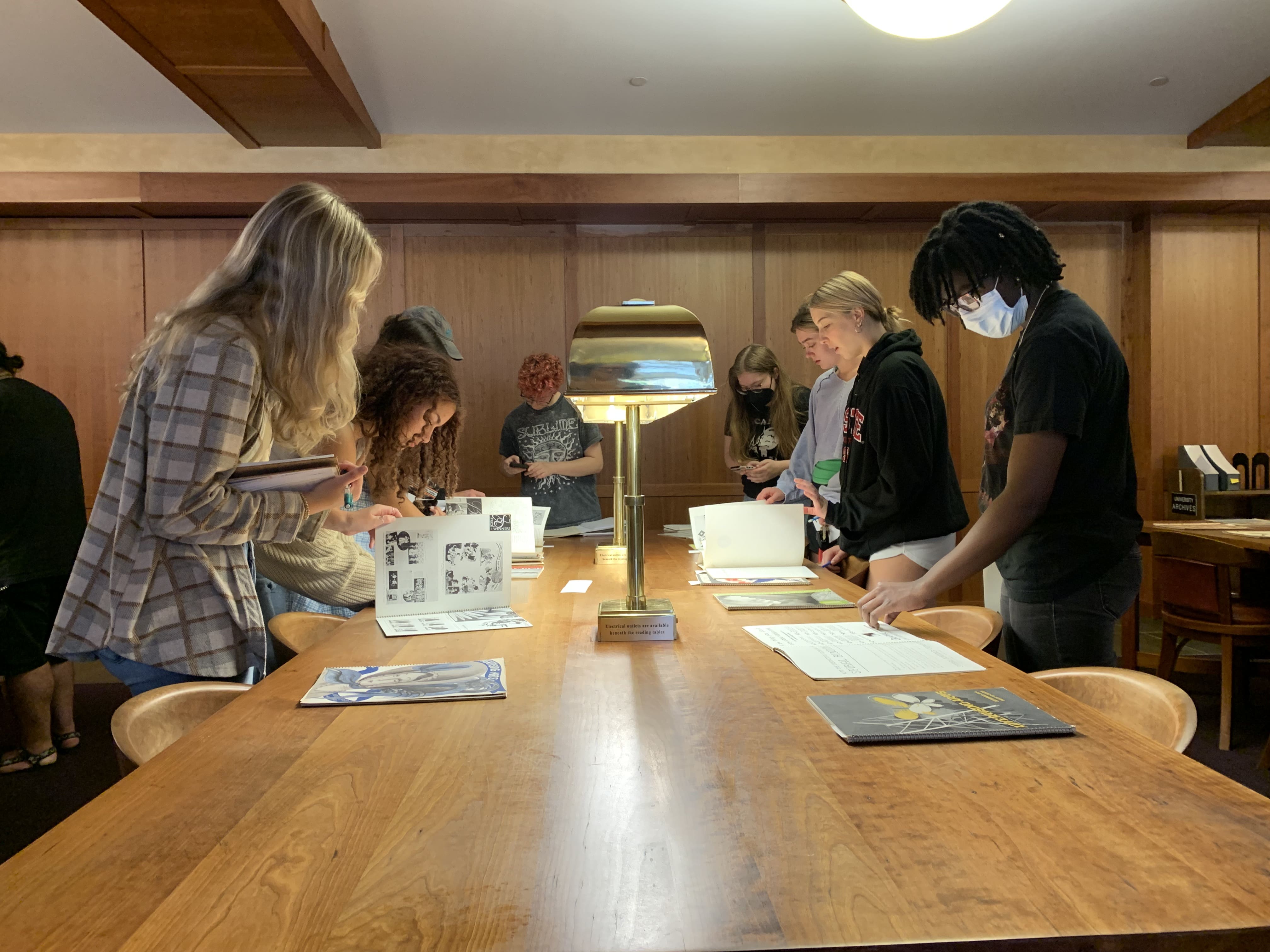
Undergraduate students exploring a collection in the D.H. Jr. Hill Library reading room.

Undergraduate students exploring a collection in the D.H. Jr. Hill Library reading room.
This blog is part of a series of posts featuring stories and photos from NC State’s College of Design, formerly School of Design. In celebration of the College’s 75th anniversary, the Special Collections Research Center (SCRC) created an exhibit titled “College of Design: 75 Years of Designing Tomorrow.” The exhibit opens in the D.H. Hill Jr. Library’s exhibit gallery after spring break March 2024. Graduate students Shima Hosseininasab, Kelly Arnold, and Alana Gomez worked together to create content for the exhibit and blog posts.
Archives represent a collection of historical documents, records, and information about a place, institution, or group of people. Many people see archives as a permanent and objective source of information. However, just like any museum exhibit, archives are curated by a person or persons who carry their own subjectivity, biases, and experiences. Archivists are record-keepers who are tasked with selecting pieces of information to enter the archive. In the past, archives were seen as impartial, neutral, and “all knowing.” More understood today, however, is the role of archives as keepers of historical memory and the way archives can be used to maintain a certain version of the past.
Through the construction, or curation, of archives, some stories are included and others are not. As researchers and curators, we often must ask certain questions about the archive we are looking at. Some questions to consider include: why is this object here? Who donates the most to this collection? Who has access to donate to this collection? What silences exist in this archive, as in who is not represented? Are some voices or people represented more than others? Why might this be?And finally, how can I represent or acknowledge these silences in my exhibit or research? These types of questions are important to remember as you move through this exhibit and future ones.
To add another layer, museum curation is itself a type of archive construction. Curators synthesize information found in an archive by selecting objects from its collection, a collection previously curated by an archivist. By including some objects and excluding others, curators construct yet another version of history, one even more truncated and selective than the original archive.
Here are some more blog posts where you can learn more about archives:
What is Archival Processing? An Introduction
Archival Terms Explained: Part 2
Reparative Archival Description in Special Collections
Accessioning: Adding to Existing Collections
“College of Design: 75 Years of Designing Tomorrow” opens in March 2024 in the exhibit gallery of the D.H. Hill Jr. Library. You can visit the exhibit during Hill Library’s hours for the rest of the year.
If you have any questions or are interested in viewing Special Collections materials, please contact us at library_specialcollections@ncsu.edu or submit a request online. The Special Collections Research Center is open by appointment only. Appointments are available Monday–Friday, 9am–6pm and Saturday, 1pm–5pm. Requests for a Saturday appointment must be received no later than Tuesday of the same week.